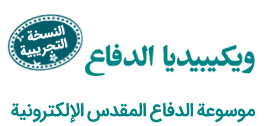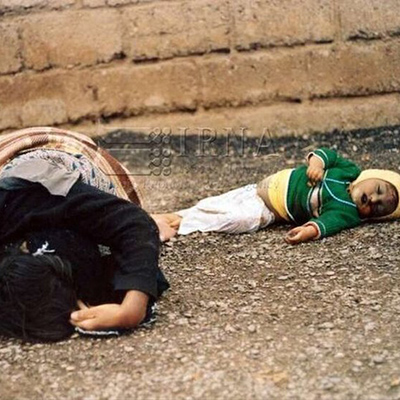Terms & Concepts
War Crimes
Sajjad Naderipour
36 دورہ
Throughout the eight-year Iran–Iraq War, Iraqi forces engaged in actions that were recognized as war crimes. War crimes are acts such as the deliberate killing of civilians or prisoners of war (POWs), torture, hostage-taking, unnecessary destruction of civilian property, and sexual assault committed during armed conflict.[1]
In the twentieth century, both civil and international wars saw countless war crimes. Some, like the massacres in South Africa, Yugoslavia, Rwanda, Ukraine, Cambodia, and Sudan,[2] gained more media attention and were later brought to trial in domestic and international courts. The United States and Japan committed the highest number of war crimes and mass killings in different wars, most of which occurred during World War II. Together, these two countries killed up to twenty million civilians in various wars.
During the eight-year Iran-Iraq war, the Baathist regime repeatedly committed war crimes both in active combat zones and non-military areas. These included the use of civilians as human shields,[3] widespread deployment of chemical weapons, mistreating the POWs,[4] and more. Nonetheless, the international community failed to show any meaningful reaction.
After Iraq’s full-scale invasion of Iran and the occupation of border towns and villages, the Iraqi army violated Articles 49 and 63 of the Fourth Geneva Convention by deporting 4000 residents of the occupied areas, including elderly people, women, and children, into Iraq. Even years after the war, the fate of many of them remains unknown.[5]
Another war crime against civilians was the individual and mass execution of non-combatants in areas occupied by the Baath army.[6]
Other brutal acts included the mass killing of wounded Iranian soldiers, the torture of POWs, and the cruel treatment of detainees in Iraqi camps. These crimes, aside from violating international law, are well-documented based on evidence such as the confessions of captured Iraqi soldiers, reports by Red Cross inspectors, international observers, and eyewitnesses.[7]
Despite clear prohibitions on indiscriminate attacks, the Baathist regime carried out extensive aerial, missile, and artillery strikes on civilian areas, undefended towns, and non-military population.[8] With more than 4,695 attacks on residential areas, including 308 missile strikes, 2,695 air raids, and 1,693 artillery bombardments, the regime repeatedly broke international law. As a result, over 12,420 people were martyred and 53,118 were injured.[9]
Another crime the Baathist regime committed was its deliberate targeting and destruction of civilian sites. After the occupied Iranian territories were liberated, it turned out that more than 1,300 villages in Khuzestan had been destroyed.[10] Furthermore, the regime engaged in torture, mistreatment, and the mass killing of wounded POWs. It also had detained Iranian POWs in secret facilities, away from international eyes, such as Abu Ghraib, al-Rashid, Nasiriyah, and even within Iraq’s Ministry of Defense building.[11] Another war crime was the live burial of Iranian soldiers and residents of Hoveyzeh on January 8, 1981. Among the regime’s other crimes were attacks on maritime shipping and threats to aviation safety.
The Baathist regime began committing such crimes in early 1982, when the Algerian foreign Minister was on an official visit to Iran. As Benyahia and the Algerian delegation were heading to Iran to discuss the war, their aircraft was attacked by Iraqi fighter jets at the Iran–Turkey border, killing the foreign minister and his companions. On February 20, 1986, an Iranian Aseman Airlines aircraft flying the Tehran–Ahvaz route was attacked by two Iraqi fighter jets, and 42 civilians were martyred. On October 15, 1986, Iraqi aircraft attacked Shiraz Airport while passengers were boarding a Boeing 737 scheduled to fly from Shiraz to Bandar Abbas. The aircraft was struck by an air-to-surface missile, resulting in the martyrdom of 30 passengers. In addition, the Baathist regime aided the hijackers and even escorted two hijacked Iranian airliners to land on Iraqi soil, in clear violation of the Chicago Convention and the 1944 International Civil Aviation Treaty.[12]
Chemical attacks were the Baathist regime’s most serious war crime against the Iranian people. Early in the war, the regime first used chemical weapons on a limited scale in the Shalamcheh area, and later repeated such use in the Meimak region. From late 1982 onward, Iraq sporadically used lethal chemical agents. In 1983, it employed chemical weapons in Piranshahr and around Panjwin. Iran called the Panjwin attack a “war crime”, and the chemically wounded people were sent to hospitals in Tehran. In early 1987, Iraq once again used chemical weapons on a large scale in Sumar.[13]
Iraq made extensive use of toxic chemical agents during the war. Around 7000 artillery shells and mortar rounds containing poison were fired at Iranian positions. Moreover, in the second phase of the war—from 1983 to early 1987—the enemy used chemical weapons during Iranian operations Karbala 4 and Karbala 5 and carried out more than 230 chemical attacks on military positions, logistics centers and rear areas, as well as on cities, towns, and civilian regions, causing a combined total of 44,000 martyred and injured.[14]
The chemical bombing of Sardasht on June 28, 1987, was the most horrific attack of its kind, killing and injuring large numbers of civilians. The Islamic Republic of Iran named Sardasht the first city in the world to become a victim of chemical weapons after the nuclear bombing of Hiroshima.[15] The catastrophe in Sardasht is comparable to the atomic bombings of Hiroshima and Nagasaki carried out by the United States.[16]
The attack by a U.S. warship on Iran’s passenger plane on 3 July 1988, Iraq’s chemical attack on Halabja on March 15, 1988, resulting in the martyrdom of about 5000 people, and backing terrorist groups, including the Mojahedin-e Khalq Organization (Munafiqeen), in murdering innocent people are all examples of war crimes. Add to that the regime’s attacks on schools, including the bombing of Shahid Hamdollah Pirouz School in Behbahan and Zeynabiyeh School in Miyaneh, where 69 and 33 students were martyred, respectively. Iraq also targeted medical facilities, such as more than 200 aid posts, 150 emergency stations, and 5 hospitals in Iran.
The United Nations’ response to Iraq’s war crimes against Iran was notably weak and failed to meet the urgency of the situation. According to many legal and political experts, one of the main reasons the war dragged on was the UN’s poor handling of the situation under pressure from world powers.[17]
During the imposed war, the UN issued only eight weak, pro-Iraq resolutions. Despite reports from its own delegations confirming that war crimes were committed against the Iranian people, the organization took no real action against the Baathist regime.[18] To this day, it has taken no meaningful steps to secure reparations for the war victims and has even refused to pursue legal action against the Baath leadership.
Despite the refusal of international organizations and courts to prosecute those responsible for war crimes against Iran, Frans van Anraat—a Dutch national—was prosecuted by The Hague’s public prosecutor on December 6, 2004, for supplying chemical materials to Iraq during the 1980s, which were used to produce mustard gas. Iran cooperated with the Dutch prosecutor in dealing with this case. Following the indictment, the court sentenced him to the maximum penalty for complicity in war crimes under Dutch law (15 years in prison).[19] In addition, regarding damages and compensation claims by 15 chemical victims who appeared in the proceedings as private plaintiffs, the court ordered the defendant to pay each of them €680.67 in damages plus €100 in court fees.[20]
[1] Javani, Jamshid, Barrasi Jenayat-e Jangi dar Asasnamei-e Divan Keyfari Beyn-ol-melali (Analysis of War Crimes in the Statute of the International Criminal Court), Islamic Azad University, Markaz-e Tehran, p. 123.
[2] Faslname-ye Pazhuhesh-e Hoquq va Siasat (Quarterly Journal of Legal and Political Research), Vol. 13, No. 33, 2011, Pp. 3–4.
[3] Majalle-ye Pazhuhesh-haye Hoquqi (Elmi–Tarviji) (Journal of Legal Research (Scientific–Promotional)), No. 26, 2014, Pp. 4, 7.
[4] Faslname-ye Elmi Didgah-haye Hoquq-e Qazayei (Scientific Quarterly of Judicial Legal Perspectives), Vol. 25, No. 90, 2020, p. 71.
[5] Gharibi, Arash, Moavenat dar Jenayat-e Jangi, Motale-ye Moredi Jang-e Tahmili-ye Araq alayhe Iran (Complicity in War Crimes: A Case Study of the Imposed War by Iraq Against Iran), Payanname-ye Karshenasi Arshad-e Hoquq-e Jaza va Jormshenasi, University of Shiraz, 2013, p. 152.
[6] Ibid., p. 153.
[7] Ibid., p. 156.
[8] Ibid., p. 159.
[9] Ibid., p. 160.
[10] Ibid.
[11] Ibid., p. 162.
[12] Ibid., Pp. 163–164.
[13] Saadat, Hadi, Barrasi-ye Hoquqi-ye Qatleaam dar Iran, Motale-ye Moredi: Sardasht (Legal Analysis of Mass Killing in Iran: A Case Study of Sardasht), Payanname-ye Karshenasi Arshad dar Feqh va Hoquq-e Eslami, University of Orumiyeh, 2018, Pp. 87–88.
[14] Ibid., p. 88.
[15] Ibid.
[16] Ibid.
[17] Qanbari Kermanshahi, Muhammad-Reza, Rahbord-e Sazman-e Mellal-e Mottahed dar Jang-e Araq alayhe Iran (The United Nations’ Strategy in the Iraq–Iran War), Payanname-ye Karshenasi Arshad dar Tarikh, University of Lorestan, 2012, p. 221.
[18] Ibid., p. 230.
[19] Majalle-ye Hoquqi, Nashriye-ye Markaz-e Omur-e Hoquqi-ye Beyn-ol-melali-ye Moavenat-e Hoquqi va Omur-e Majles-e Reyasat-e Jomhuri (Legal Journal, Publication of the Center for International Legal Affairs of the Vice Presidency for Legal and Parliamentary Affairs), No. 37, 2007, Pp. 317–319.
[20] Ibid., p. 319.



